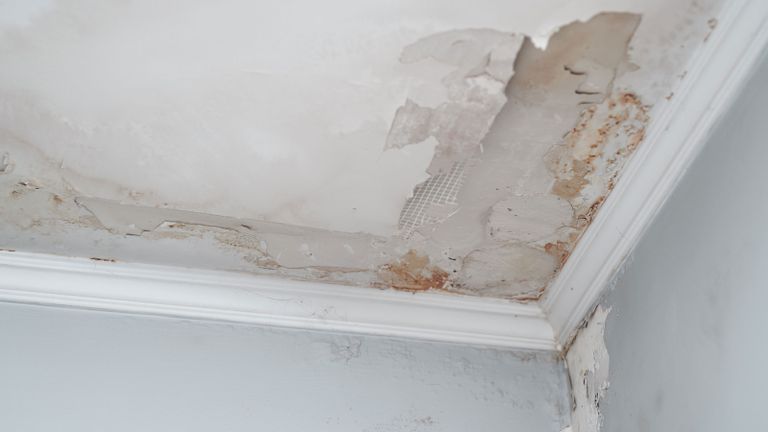Do's & Don'ts of Water Restoration.
Do's & Don'ts of Water Restoration.
Blog Article
The publisher is making a few great pointers on Ways to Reduce The Risk Of Fire And Water Damage in general in the content just below.

Water provides life, but water breach on some components where it's not meant to be can result in damage and also trouble. In addition, houses with water damage scent moldy and also old.
Water can originate from many resources like hurricanes, floods, ruptured pipes, leakages, and drain concerns. If you have water damage, it's far better to have a working knowledge of safety and security precautions. Right here are a few standards on just how to manage water damages.
Do Prioritize Home Insurance Policy Insurance Coverage
Seasonal water damage can originate from floods, seasonal rainfalls, and wind. There is additionally an incident of an abrupt flooding, whether it came from a malfunctioning pipe that unexpectedly breaks right into your house. To secure your residence, copyright insurance that covers both acts of God such as natural calamities, and also emergency situations like busted plumbing.
Don't Forget to Shut Off Utilities
When catastrophe strikes and you remain in a flood-prone location, switch off the major electric circuit. Shutting off the power avoids
When water comes in as water serves as a conductor, electrical shocks. Don't neglect to turn off the main water line valve as a way to prevent even more damages.
If the floodwaters are obtaining high, keep your furnishings steady as they can move around and also create extra damage.
Do Stay Proactive and Heed Weather Alerts
If you live in a location afflicted by floods, remain ready and aggressive at all times. Listen to the information and discharge cautions if you live near a body of water like a lake, river, or creek .
Do Not Overlook the Roof
Your roofing professional ought to take treatment of the defective gutters or any various other signs of damage or weakening. An evaluation will certainly protect against water from streaming down your walls and also saturating your ceiling.
Do Take Note Of Small Leakages
There are red flags that can attract your focus and indicate to you some weakened pipes in your home. Signs of red flags in your pipes consist of gurgling paint, peeling off wallpaper, water touches, water discolorations, or trickling sounds behind the wall surfaces. Repair as well as check your plumbing repaired before it results in substantial damage to your house, financial resources, as well as a personal nightmare.
Don't Panic in Case of a Ruptured Pipeline
Maintaining your presence of mind is crucial in a time of situation. Since it will certainly stifle you from acting quickly, stressing will only compound the problem. Panic will certainly additionally provide you added stress and anxiety. Timing is vital when it involves water damages. The longer you wait, the more damage you can anticipate as well as the most awful the results can be. If a pipeline bursts in your house, immediately shut down your main water shutoff to remove the resource and protect against more damage. Disconnect all electrical outlets in the location or switch off the breaker for that part of your house. Call a respectable water damage restoration professional for help.
Water offers life, however water invasion on some parts where it's not supposed to be can result in damages as well as inconvenience. In addition, homes with water damage odor stuffy and old.
Seasonal water damages can come from floods, seasonal rainfalls, as well as wind. Indicators of red flags in your pipes include gurgling paint, peeling wallpaper, water touches, water stains, or leaking audios behind the walls. If a pipeline bursts in your residence, quickly shut off your main water shutoff to cut off the source and also protect against more damage.
Some Do's & Don't When Dealing with a Water Damage
DO:
Make sure the water source has been eliminated. Contact a plumber if needed. Turn off circuit breakers supplying electricity to wet areas and unplug any electronics that are on wet carpet or surfaces Remove small furniture items Remove as much excess water as possible by mopping or blotting; Use WHITE towels to blot wet carpeting Wipe water from wooden furniture after removing anything on it Remove and prop up wet upholstery cushions for even drying (check for any bleeding) Pin up curtains or furniture skirts if needed Place aluminum foil, saucers or wood blocks between furniture legs and wet carpet Turn on air conditioning for maximum drying in winter and open windows in the summer Open any drawers and cabinets affected for complete drying but do not force them open Remove any valuable art objects or paintings to a safe, dry place Open any suitcases or luggage that may have been affected to dry, preferably in sunlight Hang any fur or leather goods to dry at room temperature Punch small holes in sagging ceilings to relieve trapped water (don't forget to place pans beneath!); however, if the ceiling is sagging extremely low, stay out of the room and we'll take care of it DO NOT:
Leave wet fabrics in place; dry them as soon as possible Leave books, magazines or any other colored items on wet carpets or floor Use your household vacuum to remove water Use TV's or other electronics/appliances while standing on wet carpets or floors; especially not on wet concrete floors Turn on ceiling fixtures if the ceiling is wet Turn your heat up, unless instructed otherwise

As a serious reader about How To Prevent Fire And Water From Ruining Your Holiday Season, I figured sharing that article post was really helpful. If you please take the opportunity to distribute this blog post if you enjoyed it. Thanks for taking the time to read it.
Report this page